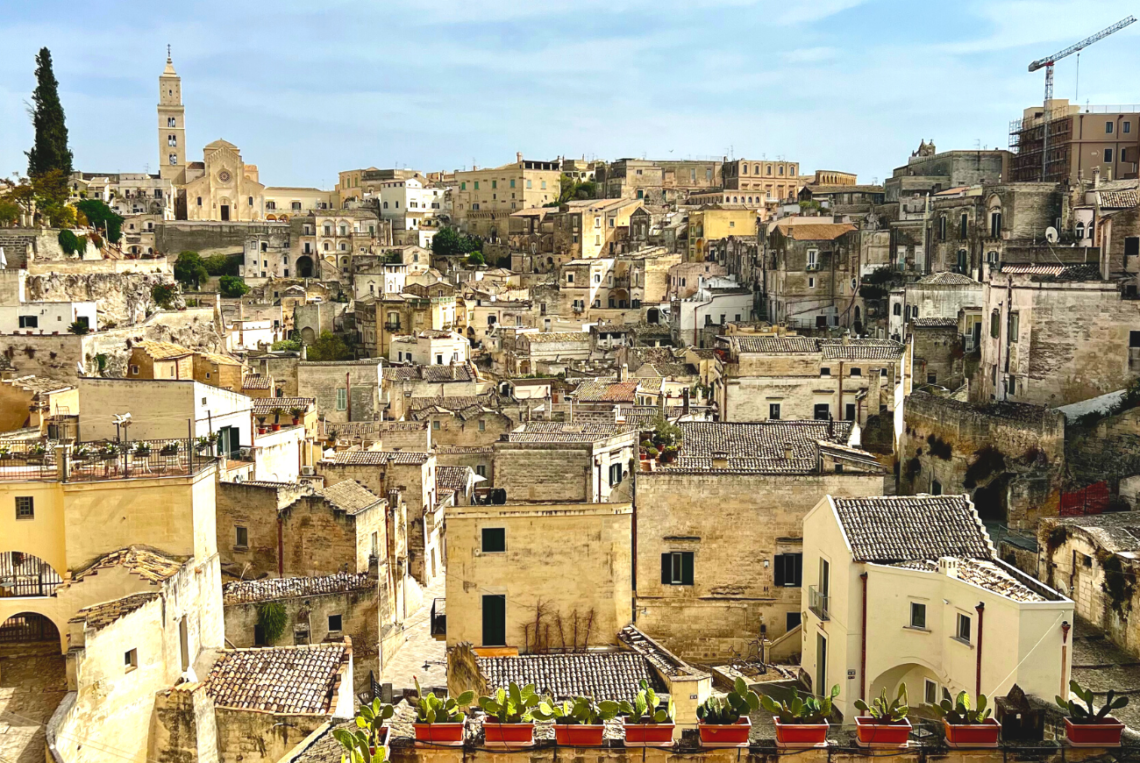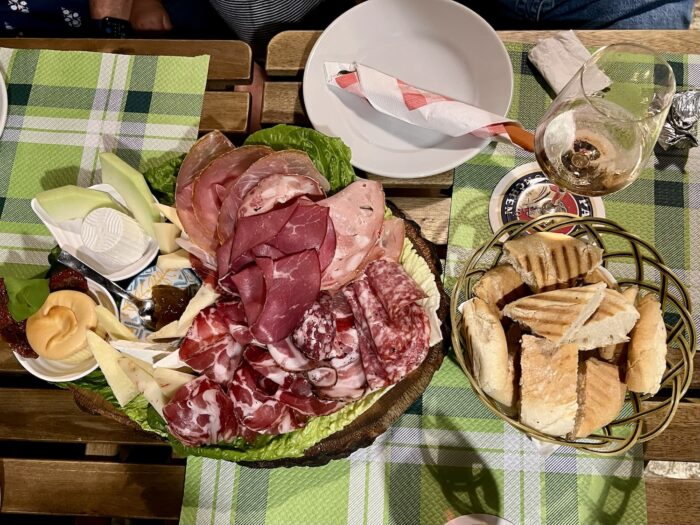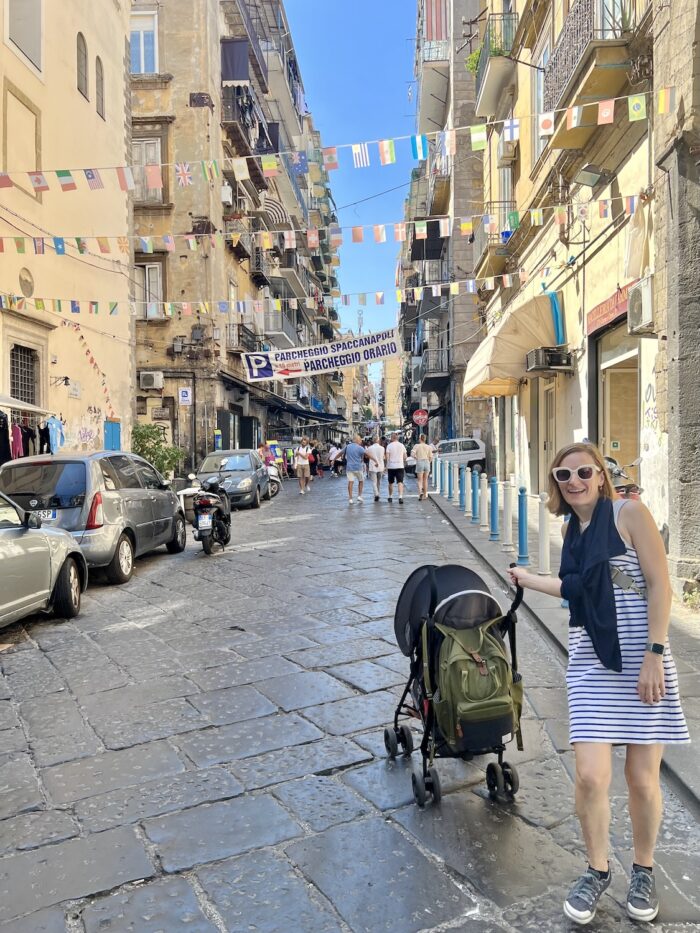
Dietitian Abroad: Southern Italy & Meal Timing
I am often asked by my clients for recommendations on meal patterns and timing. Is it ok to skip breakfast if I’m not hungry? Will skipping breakfast cause me to gain weight? Is it unhealthy to eat after 8pm? What about intermittent fasting? With such diverse eating patterns in the United States, it’s not surprising that many need guidance on this topic.
A recent trip to southern Italy had me rethinking my own preferences for meal timing and the importance of consistency, especially with kiddos at home. In this post, I’ll walk through some unique features of meal timing in southern Italy as well as some key takeaways for you to practice at home.
What is a Meal Pattern?
Simply put, a meal pattern refers to one’s eating habits, including the types, quantity, and frequency of foods consumed. A typical meal pattern in the United States might look like the following:
- 7:00am, a moderate-size breakfast of yogurt, fruit, and breakfast cereal with milk.
- 12:00pm, a quick and easy ham and turkey sandwich with a side of chips.
- 3:00pm, a small sugary snack and a caffeinated beverage to get through midday slump.
- 6:30pm, a larger family meal including a portion of meat, starch, and a small veggie side.
A few more snacks may be scattered throughout the day depending on nutritional needs and activity level, though this pattern is quickly changing.
What is Meal Timing?
More specifically, meal timing refers to the time of day a meal is consumed. A typical American breakfast is consumed between 6am and 10am. Anything after that window would likely be considered brunch or lunch. Our appetite for a meal is often driven by our internal clock – called our circadian rhythm.
Our circadian rhythm drives body functions like hormone production, alertness, digestion, and body temperature. The study of the relationship between circadian rhythm and meal timing is called chrononutrition, and it’s fascinating!
What is Chrononutrition?
Chrononutrition is a newer area of nutritional science that aims to understand how our meal timing may affect our body. A growing body of evidence suggests that meal timing is an important factor in good metabolic health. Researchers in chrononutrition are answering important questions like – does eating breakfast help prevent weight gain? Is a higher intake later in the day associated with cardiometabolic syndrome? Does late night eating affect insulin resistance?
It’s also important to note that meal timing is strongly interwoven into cultural food norms. Children grow up eating similarly to their peers. We may be inclined to eat because it’s “breakfast time” rather than because of our hunger or appetite cues.
Southern Italian Meal Patterns
I was initially surprised by how late the day starts in southern Italy. Most businesses don’t open until well after 10am, pushing the rest of the day back by 2-3 hours.
Breakfast
Breakfast is light in contrast to American expectations. A modest 6oz coffee is often paired with a small sweet pastry. This might be consumed at home or on-the-go at a coffee bar, between 7am and 10am. Take-away paper cups are hard to come by, so most coffees are consumed like an “espresso shot” — in 10 seconds or less.
While I am not a huge “breakfast person” myself, my toddler’s love affair with the American classics, like pancakes and bagels, required some careful planning on my part to avoid a meltdown. 🤣

Lunch
In terms of complexity, variety, calorie content, and time spent eating, lunch is the highlight of the day. It is usually a two or three-course meal of pasta, followed by meat or fish, then a course of cooked or raw vegetables. It’s not unlike what you’d find for dinner in America (a meat, a veggie, and a starch), except served on separate plates over a longer duration of time.
Almost every restaurant we dined at started lunch service at 12:30pm and finished by 3pm. With such a light breakfast, we were certainly hungry by the time the first course arrived.




The Italian Aperitivo
This meal caught me by surprise. Usually served between 6pm and 8pm, the aperitivo is a drink and a snack or small bite before dinner. It’s not unlike the American happy hour, though that has slowly inched forward to start closer to 3pm in the States.
We were able to use this meal like “dinner time” by ordering two or three larger snacks to share.

Dinner
Most southern Italians eat dinner between 8pm or 9pm. Infact, restaurants don’t open for dinner until almost 8pm. This is 2 hours after the average American (and almost 3 hours after the average toddler)! During the summer, southern Italians may even delay dinner until as late as 10pm.
Why, you ask? It’s a mix of southern Italy’s climate, the structure of the work day, and the centrality of the family in Italian culture. Historically, hot temperatures during the summer led many agricultural workers to take a midday break, not unlike the Spanish siesta. To this day, many shops still close from 2p to 5p, then reopen through 8pm. Which leads into the third point about the importance of family in Italian culture. Eating together is pivotal, even if it means eating much later in the evening.
Keep in mind that southern Italian dinners are much lighter than American fare. A spread of cheese, sliced cold cuts, and vegetables are very common. A smaller pasta dish, personal pizza, or sandwich are also typical. Though, it’s not any less important from a social standpoint

Isn't Late Night Eating Bad for Your Health?
It depends. Let’s look at two major factors of metabolic health — diabetes and obesity. A 2021 report estimates that 5% of the Italian population lives with diabetes, compared to 12% of Americans. As of 2022 – 11% of Italians live with obesity (defined as a BMI >30), compared to 43% of Americans.
Despite consistently eating dinner almost 3 hours after the average American, Italians have much lower rates of diabetes and obesity, indicating that it’s likely more an issue of diet quality and quantity, rather than timing.
Key Takeaways
- Find a meal pattern that works for you. If you prefer a small breakfast, medium lunch, and large & early dinner – go for it. If you’d rather skip breakfast, eat a medium lunch, and lite & late dinner – that will work too. Find a meal pattern that works with your lifestyle and eating preferences.
- Be consistent. Our circadian rhythm functions on a 24-hour cycle, driving hormone production and appetite in anticipation of our energy needs. The more consistently you maintain your meal pattern, the easier it is for your body to regulate —because no one wants to wake up feeling ravenous at 2am!
- Quality and quantity matter. A high-fat, high-calorie meal isn’t negated just because you consumed it earlier in the day. Try to select healthy foods in an appropriate portion size irregardless of the time of day you eat them.
Need more help with this? I’d love to meet with you. Feel free to reach out to me for help with meal patterns and timing.



You May Also Like

Dietitian Abroad: Greece Edition
January 1, 2017
Unapologetically Me in 2023
January 1, 2023
